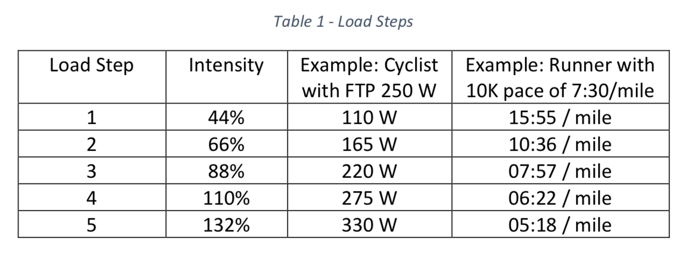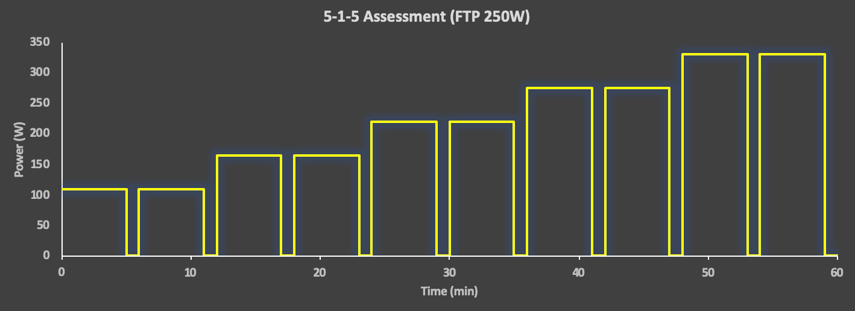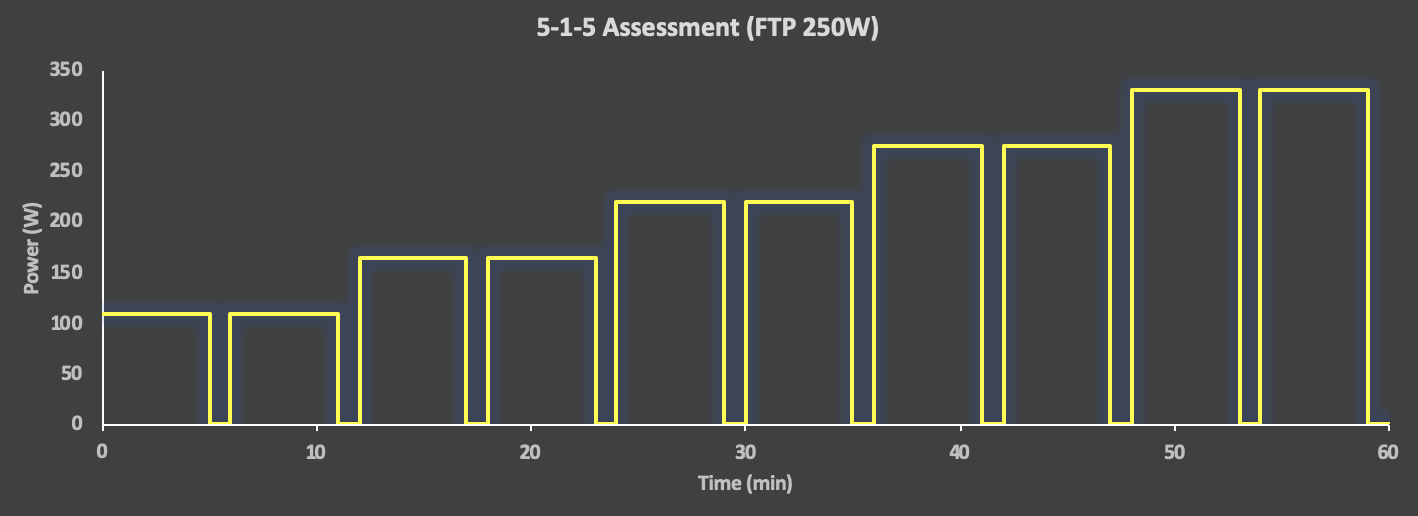How to Complete a 5-1-5 Assessment
Purpose:The purpose of most physiologic testing is to find maximal or threshold values in order to better predict or dictate an athlete’s potential for performance. However, things like VO2max, the maximal amount of oxygen an athlete can uptake and utilize, is only predictive of performance across wide ranges of athlete prowess (Levine 2008). Determining threshold values, the point at which global-body homeostasis can no longer be maintained, may lend more credence to predicting an athlete’s performance (Heuberger et al. 2018) but in terms of dictating training, it is only a starting point. Determining threshold values allows for the simplification of training by creating training zones. However, it does not describe how the body is being limited during exercise. Endurance performance is primarily aerobic, therefore any process in which oxygen is up taken, transported, delivered, or consumed can be limiting to an athlete’s performance. There are three major systems that assist in aerobic metabolism, the pulmonary, cardiovascular, and skeletal muscle. Because of the inherent limitations with current testing protocols, the 5-1-5 Assessment was created. This assessment was designed to identify the greatest limiter (lungs, heart, or muscle) of an athlete’s physiology.
Procedure:The 5-1-5 assessment can be performed with a single muscle oxygen sensor on a working muscle. Additional muscle oxygen sensors can be added to low priority muscles or contralateral muscles to refine the interpretation. The interpretation of heart rate data is also discussed. The format of the 5-1-5 Assessment is similar to an Incremental Exercise Test where the athlete is instructed to exercise at a series of increasing intensities for a fixed time at each intensity. Note: The 5-1-5 Assessment does not require a maximal effort. It is designed to see how the physiology responds to sustainable loads compared to loads that are only sustainable for a brief time. Since it is not a performance test, a maximal effort is not the goal of the assessment. The major differences between the 5-1-5 Assessment and an incremental exercise tests is that:
1) A one-minute rest is introduced between each working interval or load-step.
2) Each intensity is repeated for 2 full 5 minute intervals.
3) The athlete starts the assessment without warming up.
The load-rest-load features are critical for accomplishing the purpose of the assessment thus inspiring the 5-1-5 moniker. The reason this set-up is used is because at the onset of the load, the working muscles begin utilizing oxygen almost immediately, but the oxygen supply system takes multiple seconds to minutes to respond. This helps to highlight the oxygen utilization capacity of the muscles. The one-minute rest allows for the monitoring of oxygen kinetics during activity and during rest which allows for the extraction of much more physiologic information from the muscle oxygen data than would otherwise be available. After 5 minutes at a load, the athlete has had enough time to reach homeostasis at that load. Their cardiac output, ventilatory exchange, and vascular tone take several minutes to adjust to the load. When the load is suddenly stopped, the oxygen utilization of the working muscle drops nearly back to baseline almost immediately. Complete rest allows the muscle tension to completely release which allows any mechanical effects on blood volume to be quickly eliminated. This rapid change allows the trainer to discern mechanical blood volume effects from vascular tone effects and to separate some oxygen delivery effects from oxygen utilization effects. By completing 2 loads for 5 minutes at the same intensity, this allows the coach/trainer to compare how an athlete’s body is responds to repeated bouts.
Selecting the Loads: In order to complete this assessment in a timely manner, it is vital that appropriate workloads be selected and the increments of increase are adequate. Typically, 4-5 load steps are adequate to elucidate how an athlete’s body is responding to the physiologic stress of their sport (i.e. running, cycling, rowing, etc.). For running, start with a pace that is approximately their 10k race pace, for cycling start with an athlete functional threshold or critical power. The goal is to select load steps that are above and below threshold values therefore it is suggested that a load of 44, 66, 88, 110, 132% of 10k or FTP are used. For an example see the table below.

Once an athlete’s load steps are selected the assessment power profile can be created (example is below) and the athlete can complete their test. Remember:
- Do not warm-up before the test.
- Select 4-5 load steps 2 under 10k/FTP 1-2 over 10k/FTP.
- If the athlete cannot maintain the load for the entire load step have them rest for 1 minute, then repeat the load.

Once the test is complete analysis of the 5-1-5 assessment can be complete. Tune in to the next blog post for analysis of 5-1-5 assessments.

